24 Nov Family Travel Tips for Intergenerational Travel
Intergenerational Travel – Grand Parents, Parents & Children
Tips for travelling with your extended family
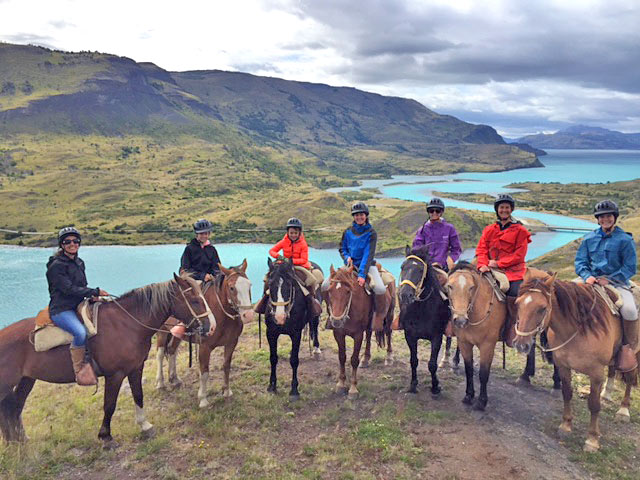
Alex Burridge – South America Travel Centre
To most of us Intergenerational Travel is travelling with your extended family; grand-parents, parents and children. It’s certainly becoming more popular and South America offers a range of wonderful activities that can cater for a wide range of interests and offer something for everyone.
Unlike many other things, when you purchase a holiday it is not something you can return so it’s important to get it right. That’s where South America Travel Centre can help. We understand the occasionally competing needs of different people travelling together and the necessity to remove most of the hassle of travel – so the whole family enjoy the holiday and spend time making unforgettable memories with their loved-ones.
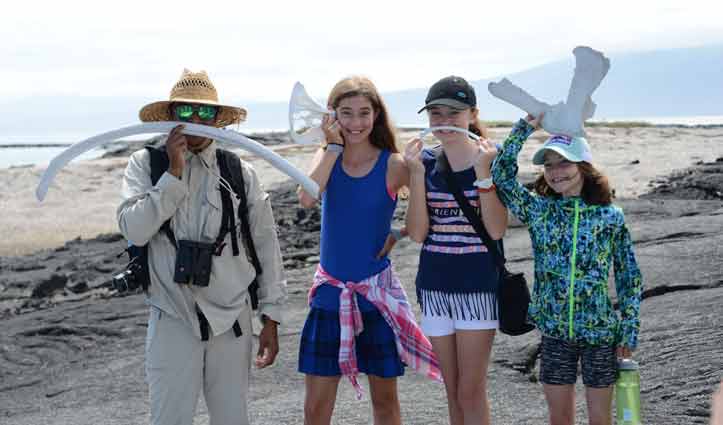
Expert guides understand how to engage with children

There’s always time for a bit of fun – kids come out of their shells
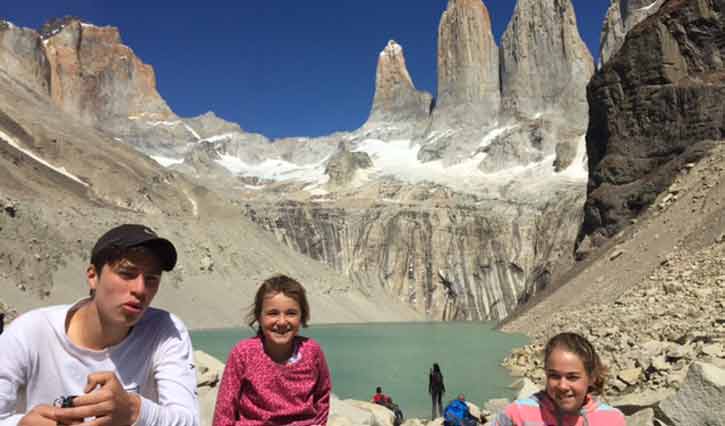
Trekking in Patagonia. There are a range of trekking options.
Travelling with children (8-16 years) and their grand-parents requires a little more consideration and planning than simply packing your bags and heading out the door. As someone who’s travelled with children from the age of 8 I’ve learned a few tricks along the way to ensure that everyone enjoys their trip, some are obvious – others perhaps less so.
For the kids:
1. Try to avoid consecutive long travelling days
2. Include a few multi-night stops – with some free time
3. Occasionally include a hotel with a pool
4. Meal times – Don’t be frightened to ask for something simple that may not be on the menu – and in a contrary sense – try different foods – one of my son’s favourite dishes in Peru was spinach soup and my daughter likes both guinea pig and Llama.
5. Include activities where everyone can share the experience and again in a contrary fashion, include some just for the kids, just for the parents and just for the grand-parents.
6. Not too many churches or old buildings
For the Parents:
1. All of the above; particularly point 5 – ‘just for the parents’
2. Try to include your children in choosing where you go
3. Consider getting your children a camera to document their journey, they’ll have something truly interesting to post on ‘insta’
4. Ask for interconnecting rooms where available
For the grand-parents:
1. Most of the above
2. Ensure you have some free time
3. Try to have some activities that are just you and your grand-children (this achieves two things – wonderful memories and time with your grand-children and the bi-product is some free time for mum & dad).
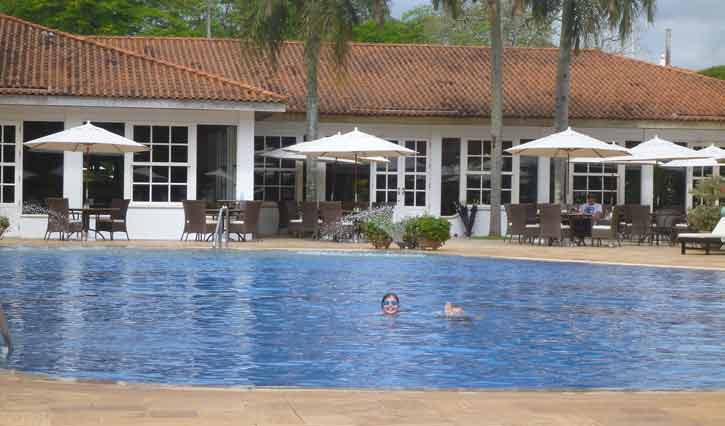
An occasional swimming pool – particularly when travelling during warmer months.
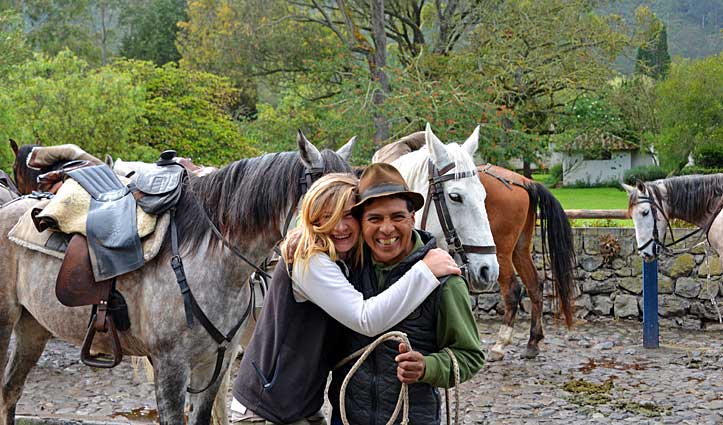
Friendly, welcoming and safe.
For everyone:
1. Don’t try to do too much – a significant part of the ‘hassle’ is packing bags and checking in at airports.
2. Select a base and discover from there.
Here are a few suggestions for itineraries that can cater for a range of interests as well as a few properties that are perfectly placed to offer something tailored for all of the family group (i.e. it’s not necessary that everyone does the same activities and excursions all of the time).
Sample Itineraries Perfect for Families
Below are some itineraries that are perfect for families travelling together, however these are just a starting point to give you some ideas of what South America has to offer. We will tailor your itinerary to suit your family’s travelling needs and interests for the duration you require. Contact us to start planning your families South America holiday.
Ecuador mainland & the Galapagos Islands
If Ecuador was a burger it would be the burger ‘with the lot’. Standards are high, distances relatively short, and the range of activities, landscapes and activities is broad.
As a tailor-made company we can vary any itinerary to fit with the ages/interests and budgets of the family group and I’d suggest including; Quito for a couple of nights to overcome any jet lag. The old town is a UNESCO protected site and a city exploration can include (or not):
- Beautiful churches with access to the domes/rooftops on specific days
- The cathedral
- Chocolate tasting- A cable car journey
- The ‘Centre of the World’ – a monument and museum marking the general location of the equator where you can stand with a food in each of the hemispheres.
Quito is a perfect example of how it’s possible to create something which has something for everyone; I’ve found that children can enjoy most things, if we at least consider it from their perspective; old buildings can be beautiful, have amazing history and architecture – and they can also be quite boring (depending on your perspective of course) – and with a camera and the added aspect of climbing up onto the roof top something that could be boring now has something for everyone. So with a deep knowledge of the destinations and options it’s possible to create an itinerary that is engaging and enjoyable for all.
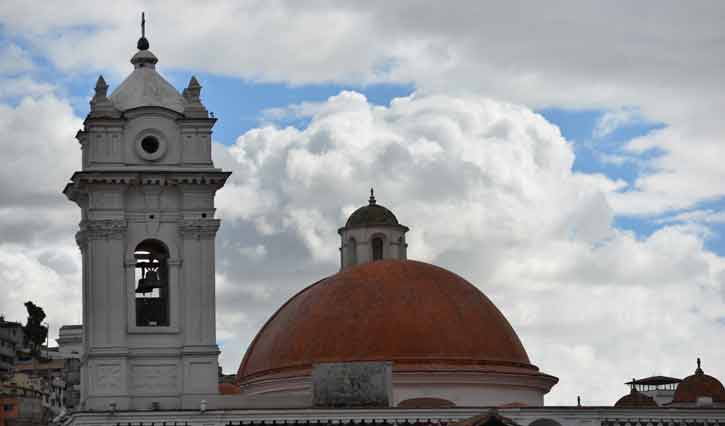
With access to the roof tops of several churches a ‘city tour’ becomes fun for all the family.
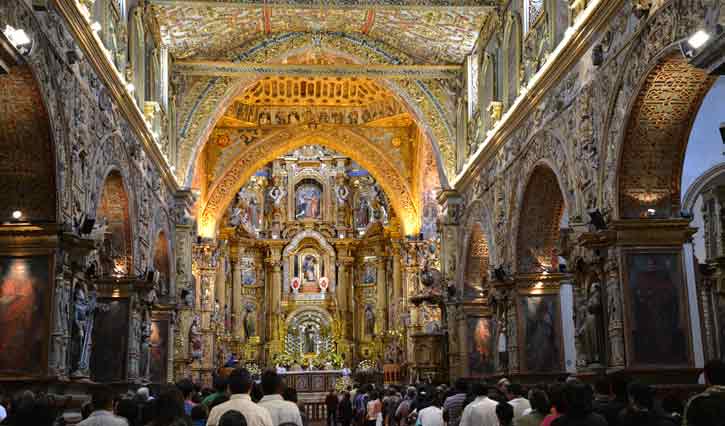
Several of Quito’s churches are absolutely beautiful.
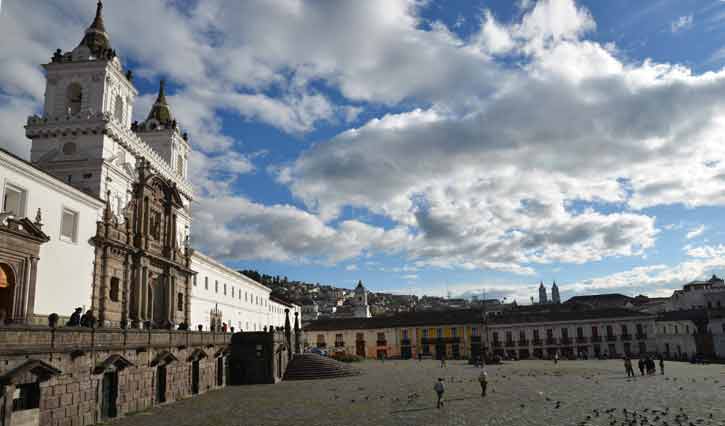
Old town Quito is a UNESCO protected world heritage site. On Sundays it is transformed in to a large market.
Beyond Quito there are several wonderful options:
A stay at a hacienda (a large ranch), perhaps Hacienda Zuleta, which is beautiful, has a wonderful history (being the home of former Ecuadorian Presidents) as well as now being a working dairy farm which has its own cheese factory, horse riding, walks, a condor rehabilitation programme, horse and buggy excursions to name a few of the options on the property. It’s also a short drive from the Otavalo market; a wonderful artisans market.
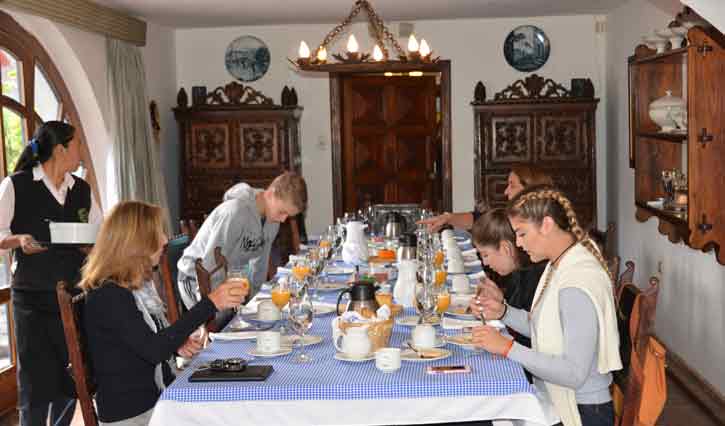
Meal times are an excellent time to catch up on the day’s activities; whilst you sample excellent locally sourced cuisine.
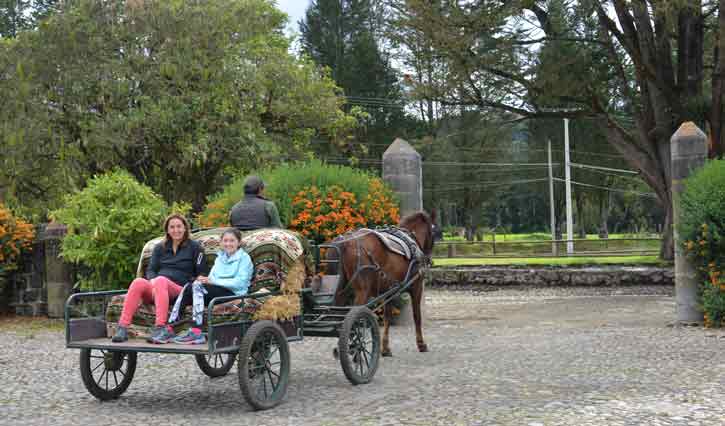
Hacienda Zuleta offers a range of activities, here one for mum and daughter, a horse and buggy ride around the farm.
Cloud Forest
After a Hacienda stay the options there are still many options. Perhaps a visit to a Cloud Forest; there are several lodges but without doubt the best is Mashpi Lodge. Mashpi offers excellent cuisine, a spa, many cloud forest walks, a sky-bike, a cable car, a hummingbird experience and a beautiful butterfly house. It’s another example of a property that can cater for everyone’s interests and allows a choice – if mum wants a spa whilst everyone else heads to the sky-bike the lodge can easily arrange this.
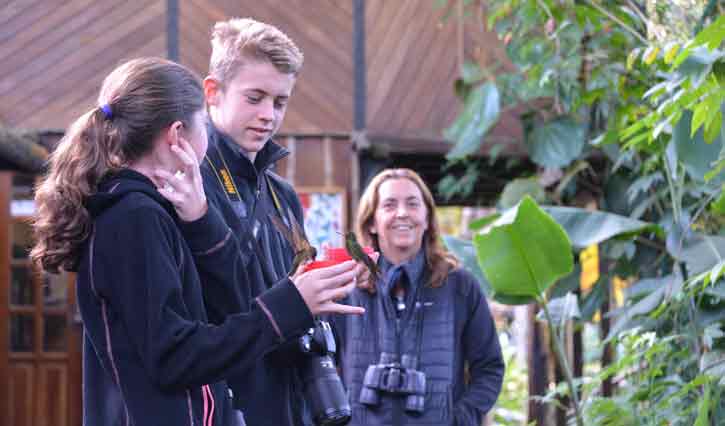
40 species of hummingbirds have been identified at Mashpi Lodge. A wonderful excursion for all the family.
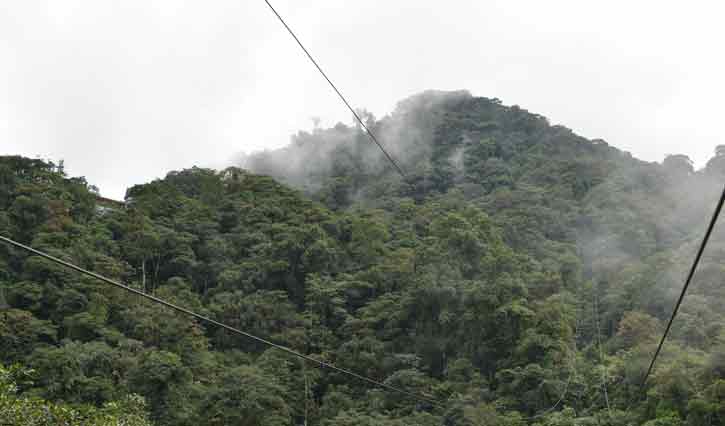
A six tower cable car ride offers excellent views of the Cloud forest canopy, as well as easier access to some parts of the reserve.
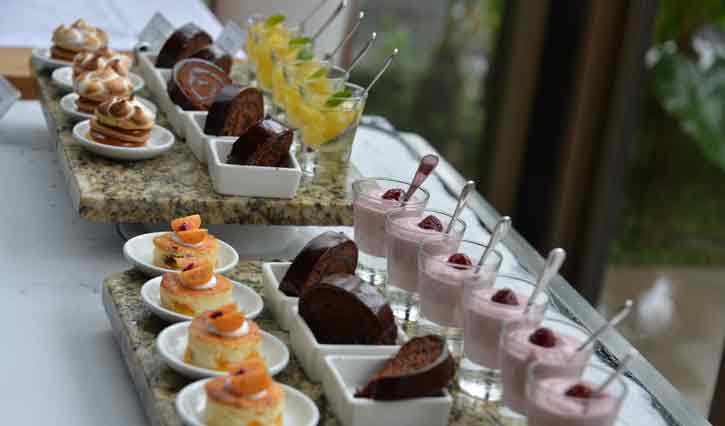
The cuisine at Mashpi Lodge is excellent. All served in a dining room with floor to ceiling windows.
Banos
For the more active or adventurous travellers, the city of Banos is a must. With flying foxes, white-water rafting, paragliding, mountain biking, horse riding and hiking there is plenty to keep you busy. As a place to base yourself the charming Luna Runtun would offer all of the above with a Spa & Wellness centre (which you might need after a day of activities).
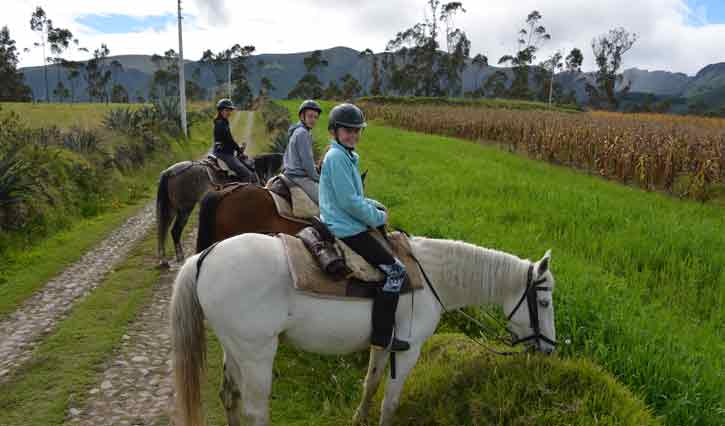
Many haciendas have excellent and calm horses suited to many levels of experience.
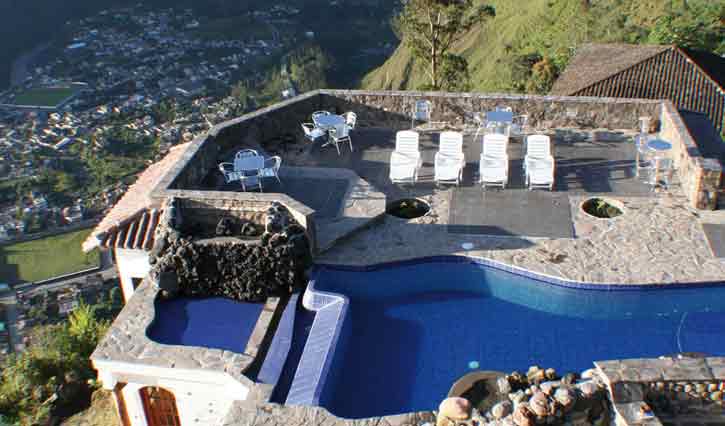
Luna Runtun resort & spa offers a peaceful retreat after a day of activities.
Amazon Rainforest
In the Amazon you could opt for a luxury river cruise or a comfortable rainforest lodge, with hikes and canopy walk-ways, piranha fishing, and of course the opportunity to see several species of monkey, macaws, Giant River Otters and even Jaguars.
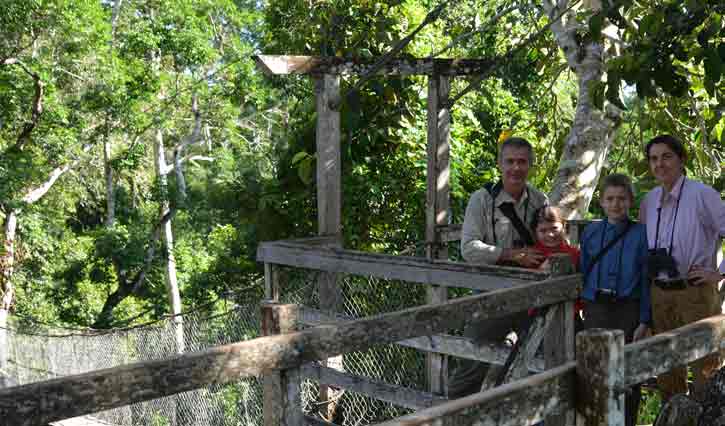
Canopy walks and towers.
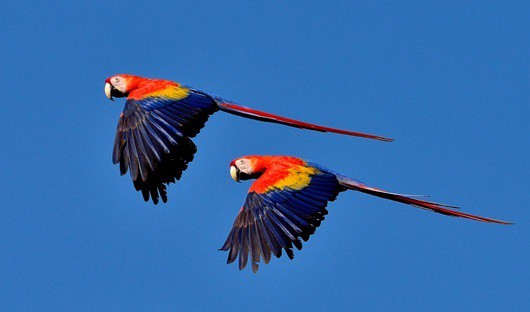
Fascinating rainforest wildlife (Macaws)
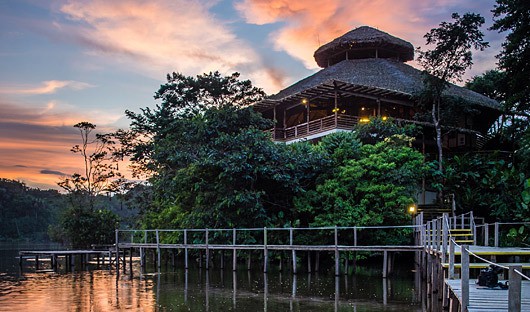
Very comfortable rainforest lodges (La Selva pictured)
The Galapagos
And finally the Galapagos Islands where there are lodge and hotel options as well as cruises. As long as everyone can sail a cruise is easily the best option. I suffer from sea sickness and my solution is medication. It is definitely worth it. There are smaller vessels with just 16 clients with a guide or 94 client vessels that will likely have other children on-board (which depending on your individual preferences can be a good or not such a good thing).
The proximity of the wildlife, the opportunities for kayaking, snorkelling, relaxing, walking, taking amazing images all make a Galapagos cruise a very special way to end your time in Ecuador, the South American country with ‘the lot’.
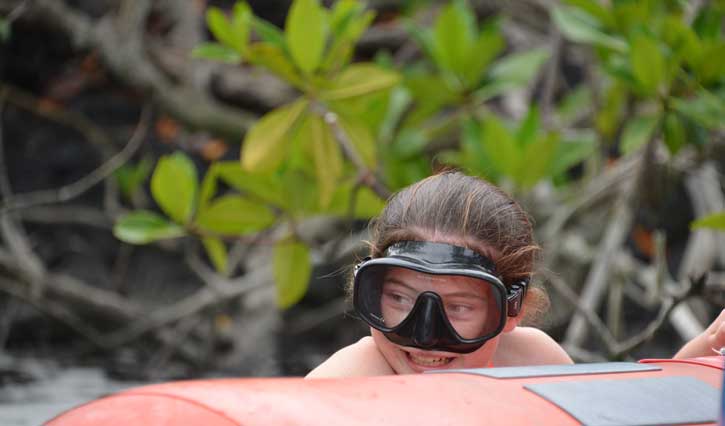
Snorkelling with sea lions is a highlight for everyone.
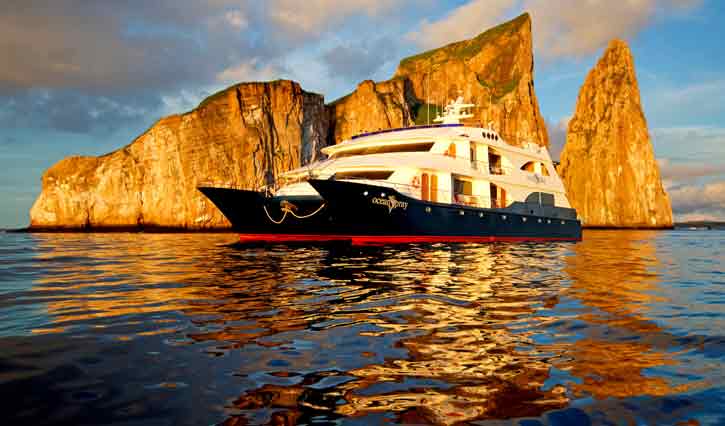
A range of excellent vessels with first-class facilities and great guides.
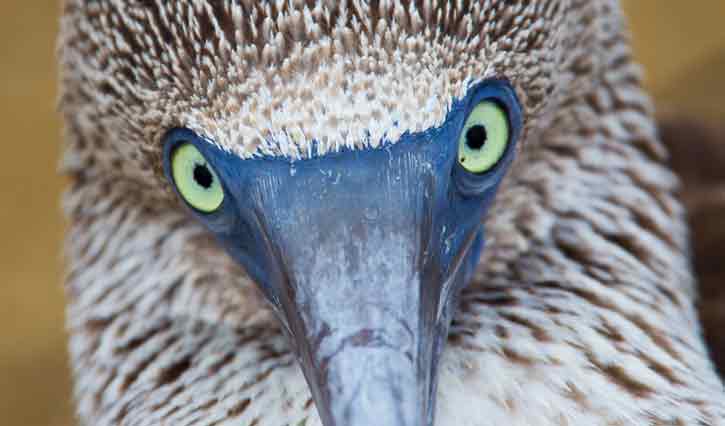
Incredible wildlife including the Giant tortoise and here the blue footed booby.
CHILE
As Chile stretches from the south of Peru to South America’s foot a distance of 4,300 km it has many different climatic zones which means a two or three week holiday will be incredibly diverse. Just like Australia, Chile has benefited from the resource boom (e.g. is home to the largest copper mine in the world) and hence infrastructure has improved; as a result Chile is another excellent example of the ‘changing face of South America’.
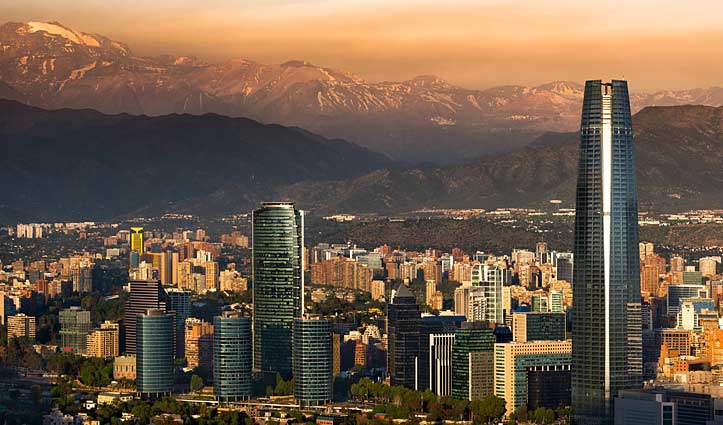
Santiago
Santiago is a perfect place to get over any effects of jet-lag. It’s a cosmopolitan city with many excellent restaurants, many fine museums and an attractive colonial centre. Santiago is also the gateway into the wine regions of Chile as well as Valparaiso; an attractive seaside town. Several of the wineries offer very comfortable accommodation as well as some activities; horse riding and mountain biking in particular.
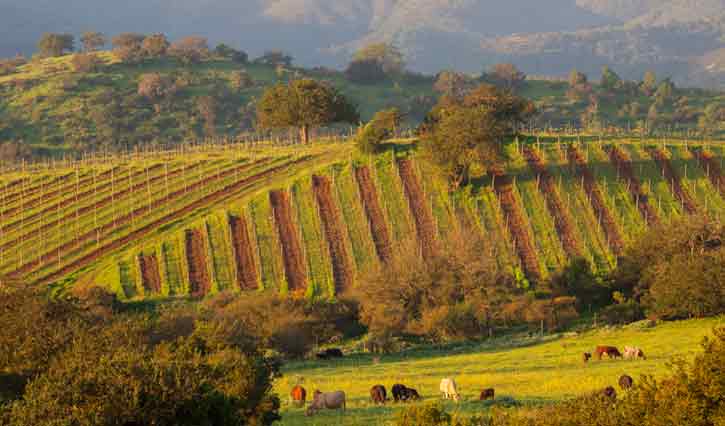
Within and hour of Santiago there are several lovely wineries offering accommodation, activities and, of course, tastings.
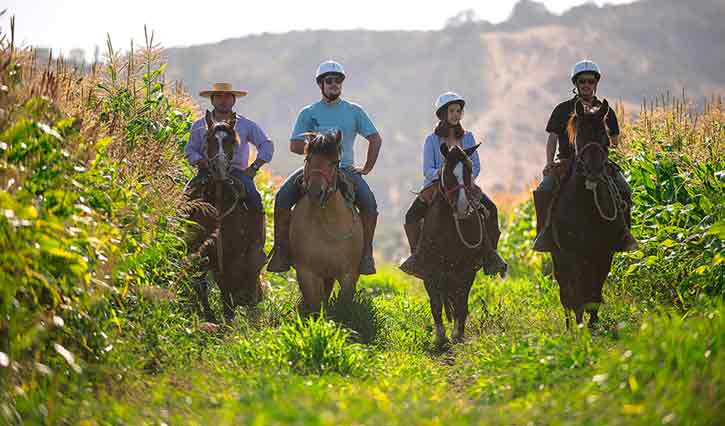
Activities often include horse riding or cycling.
Atacama
A flight of just over two hours takes you to Calama, a drive of about an hour will have you in San Pedro de Atacama. To call the area the ‘Atacama Desert’ in many ways creates a false perception as there is so much more than desert in this wondrous region.
There are several wonderful lodges from which to base a 3 to 5 night stay in the region (and you’ll need all of that time if you want to thoroughly explore the area and also have a little time to relax and enjoy your surrounds); explora, Tierra, Alto and Awasi all offer excellent accommodation (including a pool) as well as a very wide range of excursions; horse riding, cycling & mountain biking (to salt lakes), hiking and numerous half-day vehicle based trips.
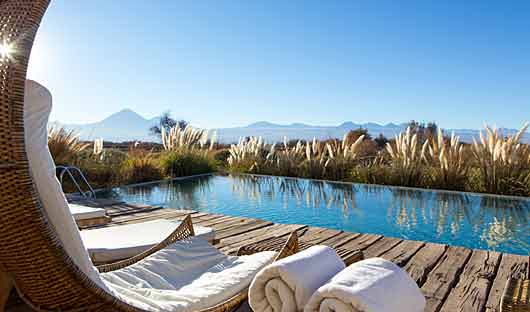
Several excellent properties offer a range of activities & excursions as well as very comfortable accommodation.
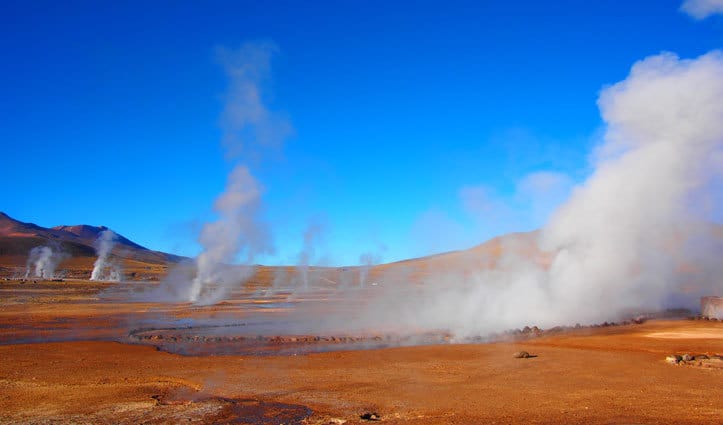
A half-day sightseeing trip to the Katio Geysers is a must.
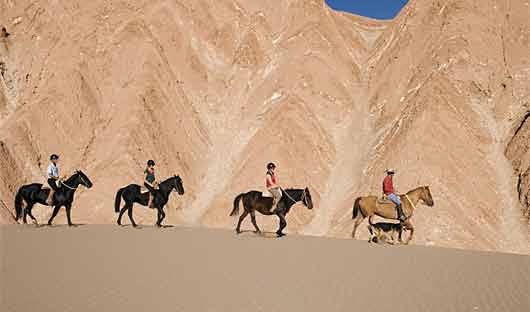
A gentle ride through the stunning landscapes found just outside the town of San Pedro is another beautiful way of discovering the region.
Sample of Options
Including:
Geyser del Tatio; where you will see hundreds of geysers, some spewing steam and others boling sulphurous mud. In this area there is a range of wildlife; Vicuna, rhea (Sth America’s emu), viscacha (a long-tailed rabbit), Andean fox and flamingo to name a few.
La Luna valley can be explored on foot, by horse or with a vehicle. The landscapes are amazing and offer incredible photographic opportunities.
Or for a more rejuvenating experience perhaps the Puritama hot springs.
The wonderful thing about the Atacama region is not only are the options many and diverse, the way the hotels operate lends itself to all guests doing what they want; even within a family group, some excursions you may choose to do all together – others you can each try the excursion that is of most interest to you.
Please leave yourself some time to enjoy the property you are staying at and to wander around San Pedro de Atacama. Whilst it’s a small town with just one ‘main street’ it’s pleasant to explore and perhaps buy a souvenir or two.
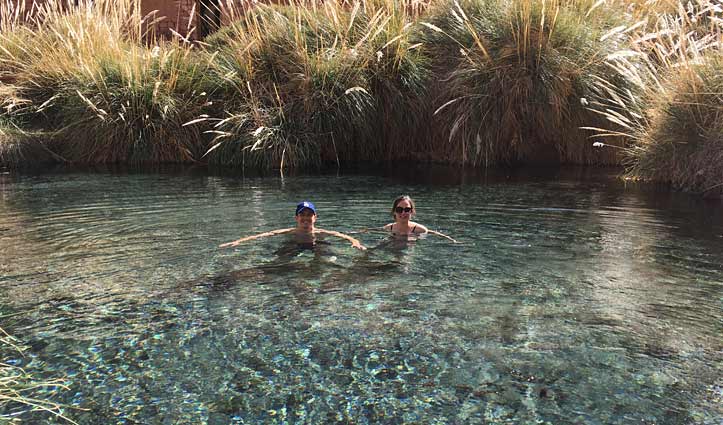
Hot springs are yet another option for an excursion which can be accessed by a hike or by vehicle.
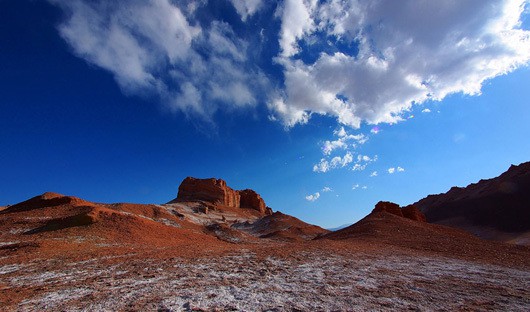
Stunning and diverse landscapes are a feature of the region, excellent for photography.
Chiloe Island
The island is home to 16 Jesuit built wooden churches covered in traditional ‘shingles’ they are UNESCO World Heritage listed and whilst a visit to all of them might not be for everyone and exploration of the island and its culture would benefit from visiting one or two.
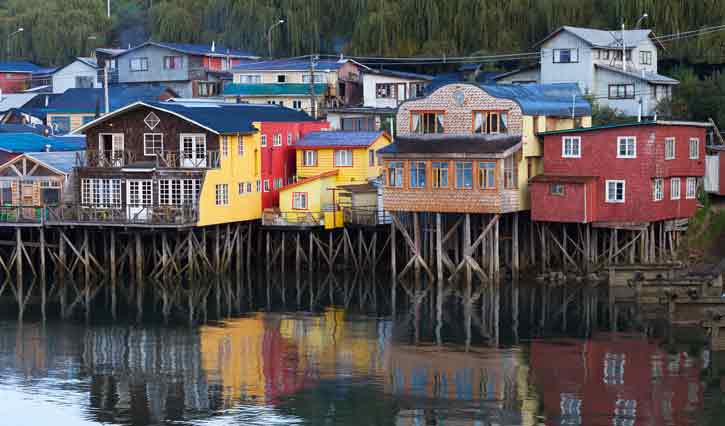
Castro, the main town on Chiloe, is famous for it’s colourful houses on stilts.
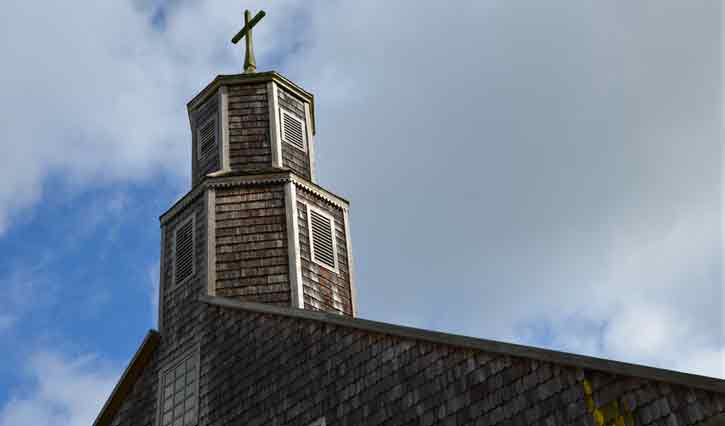
There are 16 UNESCO protected ‘shingle’ covered wooden churches on Chiloe.
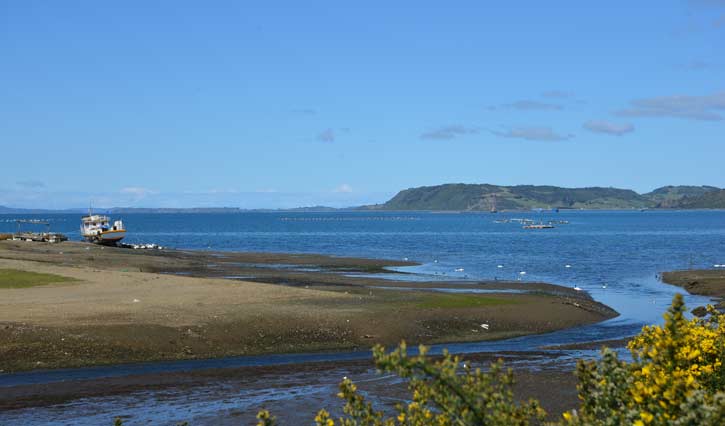
Chiloe Island is an unspoilt oasis offering an insight into a less changed part of Chile.
Patagonia
After Chiloe I’d suggest heading further south (in our summer months October to April) to Punta Arenas and onto Puerto Natales the entrance to the stunning Torres del Paine. Patagonia is not just a place for ‘trekkers’, though of course there are many fine walks and treks for those so inclined. Patagonia offers a range of excursions for the very fit and for those whose trekking days are behind them. The scenery is stunning, the wildlife excellent, with the fortunate getting a glimpse of the ‘ghost of Patagonia, the puma (or mountain lion/cougar).
As with the Atacama region there are many fine lodges offering excellent accommodation, some including spas, many offer fully inclusive stays. 3 nights is the bare minimum with 4 or 5 being preferred. As I said at the outset basing your family in one place for an extended period is ideal and with so many options and excursions there no chance you’ll be bored.
There are many equally beautiful areas of Chile not included in the above; like the less visited Aysen region, which includes places like the Marble caves, a cruise on the Patagonia Fjords, or perhaps enjoy the Lakes Crossing which will see you crossing into Argentina.
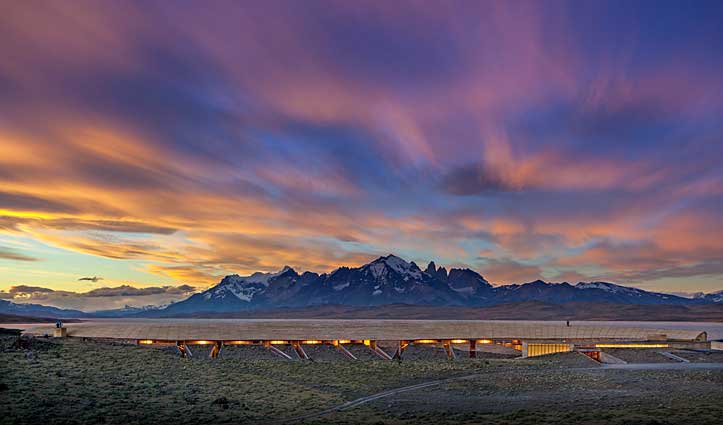
Several lodges in Torres del Paine National Park offer incredible views as well as excellent accommodation.
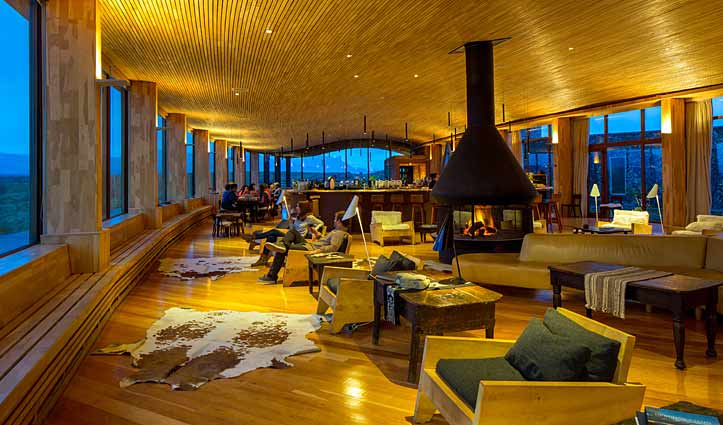
At the end of each days activities, and that could be a spa, you can all relax and share the day’s experiences.
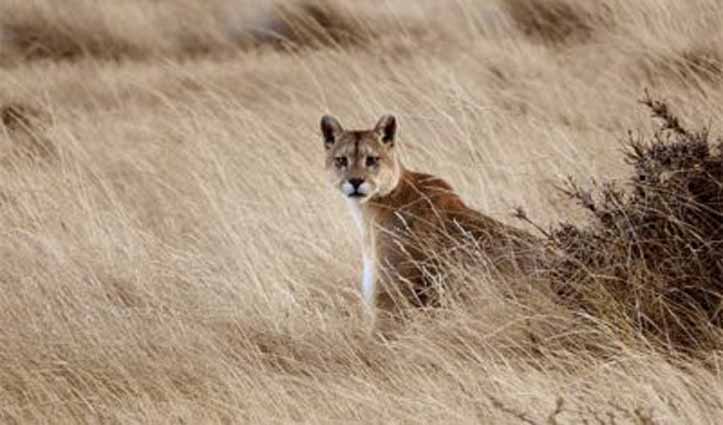
Incredible landscapes and wildlife; for the fortunate a glimpse of a puma.
PERU
Perus’s coastal capital Lima has gained a reputation for excellent cuisine with two of the world’s top 50 restaurants. In addition to great food take time to explore the colonial part of the city as well as a couple of fine museums.
What’s next? well there a many wondrous choices and it’s likely a visit to the Amazon, Lake Titicaca , Colca Canyon and Machu Picchu are amongst the many options.

Amazon Rainforest
There are two main ways of discovering the Amazon by riverboat or a lodge. I’d suggest a lodge offers the greatest diversity of wildlife as well as range of activities. A three night still should give you good opportunity to see some of the Rainforest’s inhabitants.
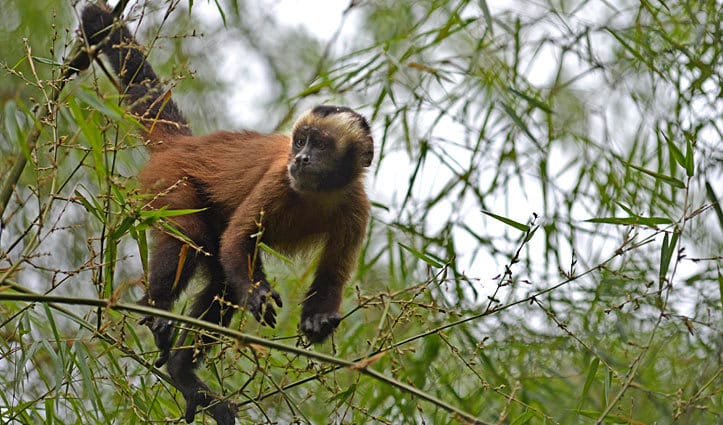
Capuchins, macaws, marmosets, giant river otters, capybara, parrots, tarantulas and more .
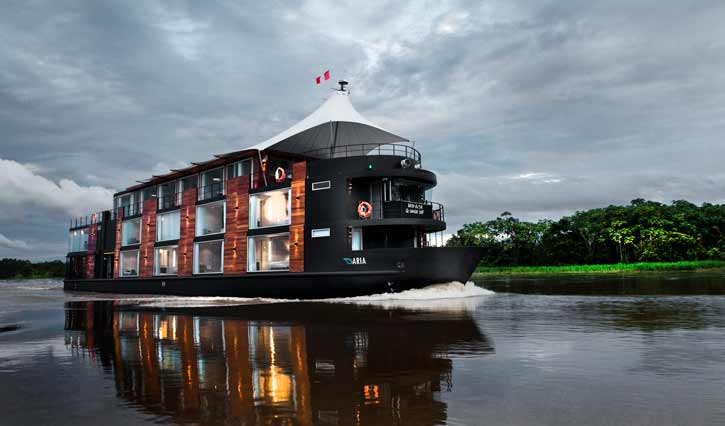
A floating luxury hotel in the Amazon.
Machu Picchu & The Sacred Valley
For the adventurous there are several hiking options; with durations from 1 to 7 days. You could potentially have some people hike whilst other family members explore the Sacred Valley (which has a lot to offer) meeting up again at the Sun Gate/Machu Picchu.
The Sacred Valley (Pisac, Urubamba, Ollantaytambo ) – to name three of the more famous towns/Inca sites) is a great place to explore as well as to acclimatise. We always suggest you arrive into Cusco and immediately head down into the Sacred Valley. 3 nights is a minimum, 4-5 would be ideal as there is so much to see and do. Yet again there are several excellent properties with explora offering inclusive stays with many and varied excursions.
After exploring the Sacred Valley jump on one of four different train services to Machu Picchu (minimum 2 nights). Then back to Cusco for another 2-3 days; as Cusco is higher you should now be acclimatised.
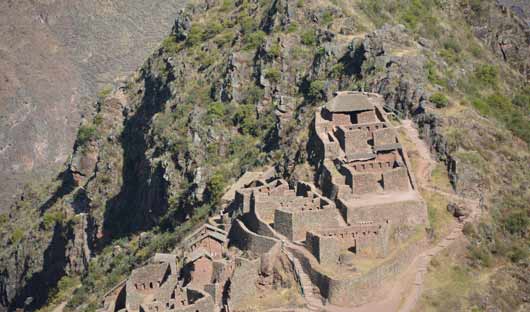
There are many lesser known ruins that can be discovered in the Sacred Valley.
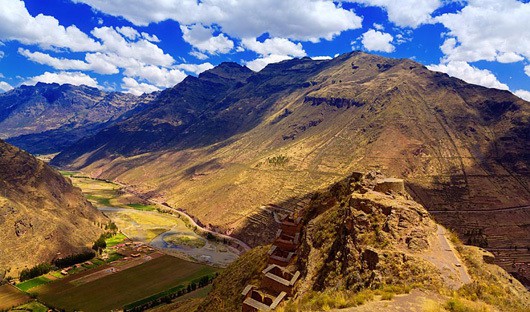
The Sacred Valley offers a variety of activities including hiking, mountain bike riding, kayaking and horseriding.
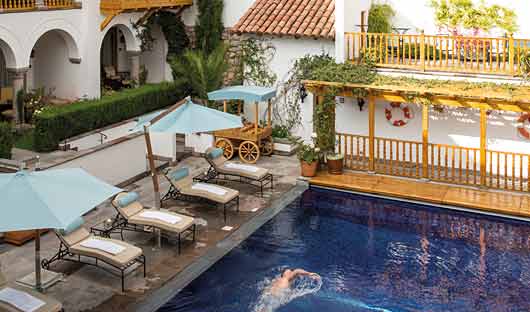
Allow time to enjoy the hotel’s facilities and rejuvenate for days of exploring.
Lake Titicaca, Arequipa & Colca Canyon
Depending on your time constraints you could include another train journey to Lake Titicaca and onto Arequipa and the Colca Canyon (home to many Andean Condors). We always suggest doing this last; due to the altitude.
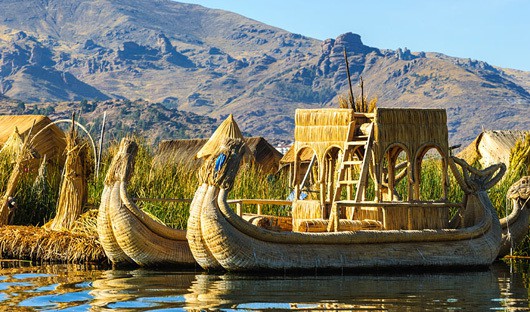
Uros Reed Islands Lake Titicaca.

Andean Condor – Colca Canyon Peru.
Summary
As with Chile and Ecuador the diversity is immense and the opportunities for exploring, discovering, learning, sharing and relaxing are immense.
For a second trip, or for the more adventurous, there are itineraries that link Argentina/Brazil/Bolivia and Chile into one magnificent trip; and the distances aren’t as bad as it could seem, Argentina shares Iguazu Falls with Brazil and the top left hand corner of Argentina shares the border with Bolivia and Chile.
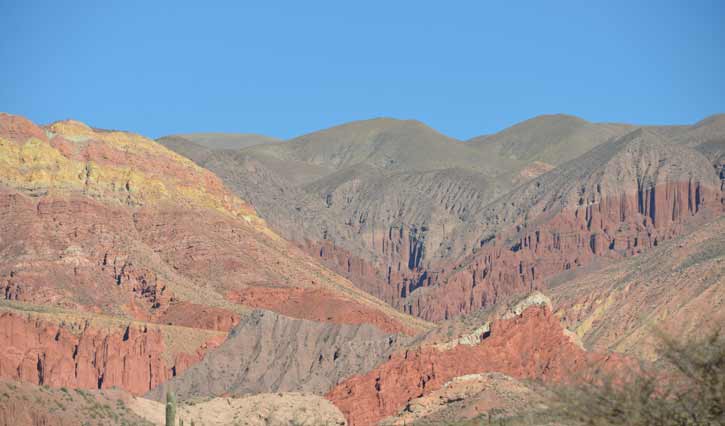
Seven coloured mountains Purmamarca northern Argentina.
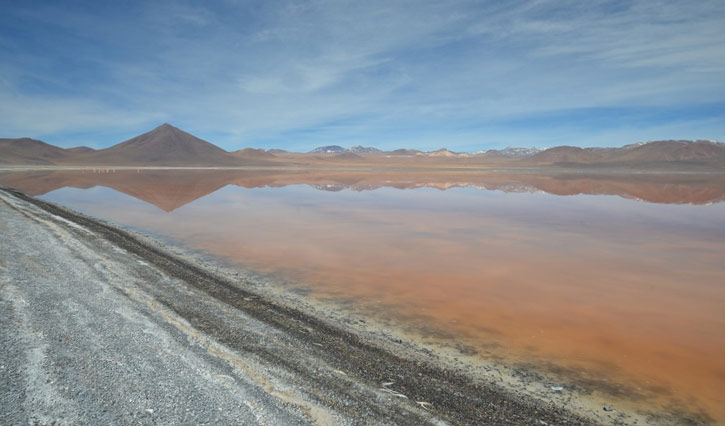
Red lagoon Bolivia – an unknown highlight.
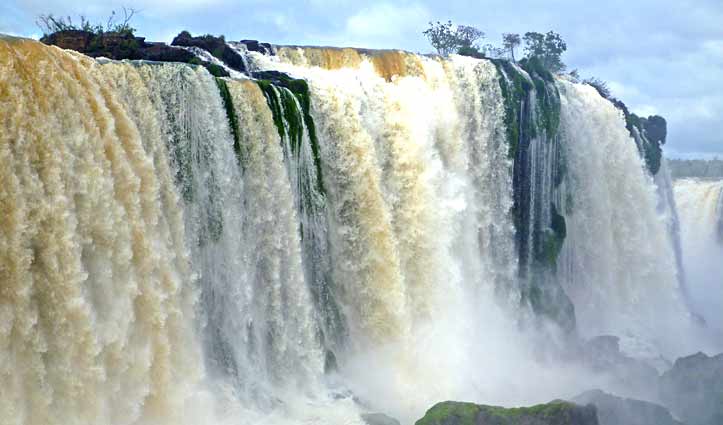
The mighty Iguazu Falls on the border between Brazil and Argentina.
Memories
As I started please don’t try to do too much, a rushed itinerary can lead to trying to see more but actually see less and most importantly enjoying the journey less. It’s often not until you travel you realise how much there is to see and discover – we ask you allow us to help you avoid those mistakes and plan a holiday of a lifetime to will cater for everyone.
There are many equally beautiful areas of Chile not included in the above; like the less visited Aysen region, which includes places like the Marble caves, a cruise on the Patagonia Fjords, or perhaps enjoy the Lakes Crossing which will see you crossing into Argentina.
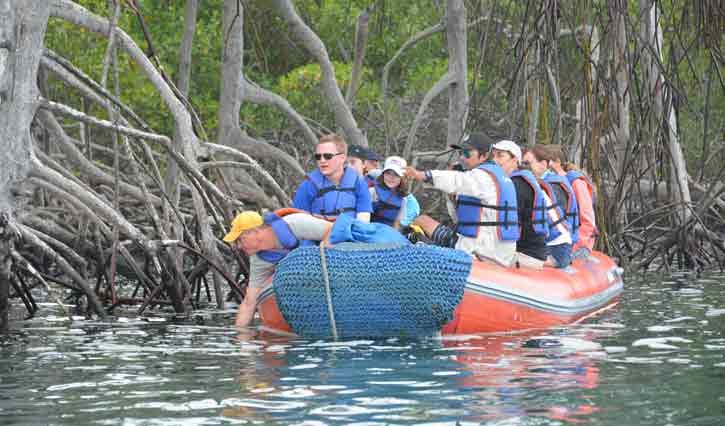
Sharing the wonders of the Galapagos.
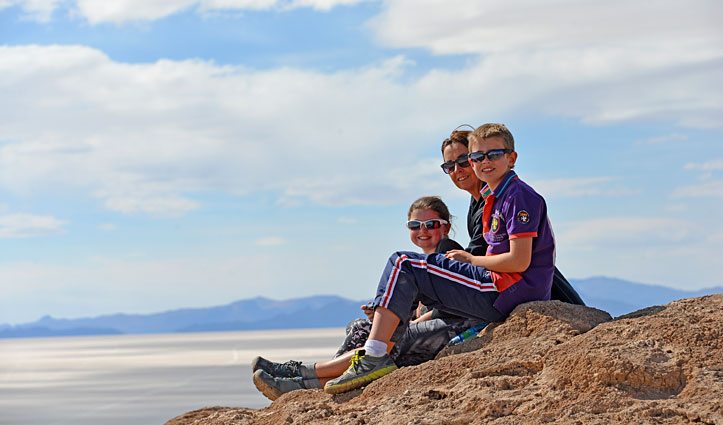
Visiting places that create lasting memories.
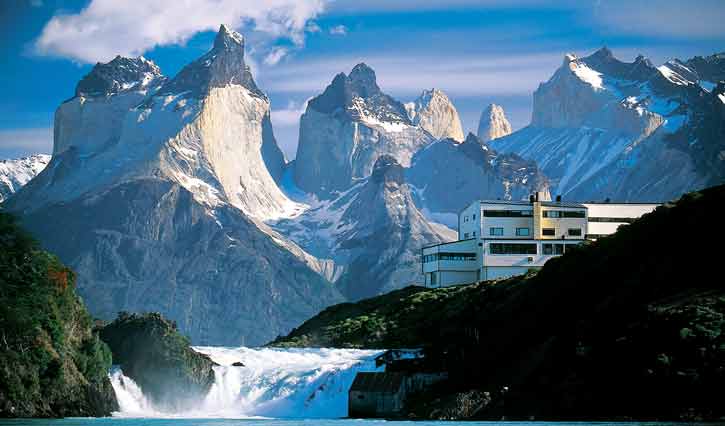
In safety & comfort and with something for all the family.

